What Is Thai Basil and How Do You Use It?
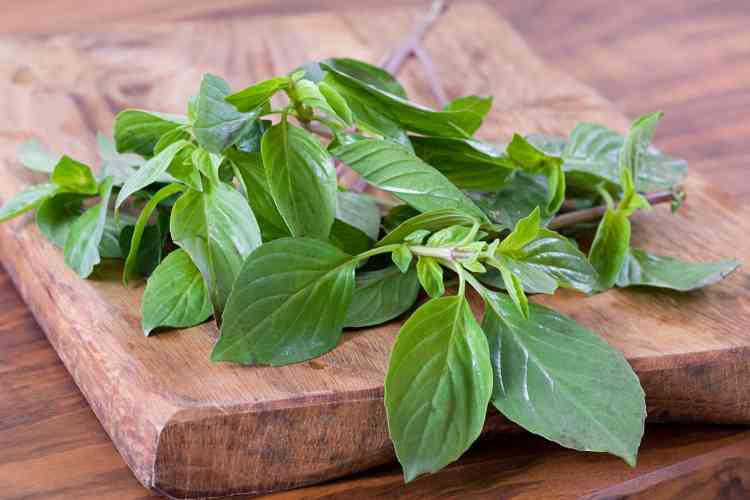
One of the most quintessential flavors in Asian cuisine is Thai basil. A cousin to the basil that’s often used in Italian cuisine, Thai basil is similarly aromatic but with a different flavor profile. Thai basil also looks physically different than other basil varieties. But what exactly is Thai basil? What is the flavor of the herb? And how can you use it in your own cooking?
Luckily, Thai basil is both easy to grow and easy to cook with as a home gardener or chef. You can grow this herb in your own garden and use it to flavor your Asian-inspired meals. This helpful guide will teach you everything you have to know about growing and using this herb to elevate your cooking.
Jump to Section
- What Is Thai Basil?
- Thai Basil vs. Basil
- How To Use Thai Basil
- How To Grow Thai Basil
- Where To Buy Thai Basil
What Is Thai Basil?
Thai basil is a basil variety that originates from Southeast Asia. The herb provides a savory and spicy flavor with a bit of an anise taste. Because of its distinct flavor and aroma, it’s often used in Southeast Asian dishes and is considered an irreplaceable ingredient. The herb features in dishes like salads, stir-fries and curries.
It’s also used as a garnish for foods like pho. Thai basil leaves are sturdier compared to other varieties, which makes it a great garnish. A Thai basil leaf is slim, pointed and has serrated edges. They often have deep purple speckles on the green leaves.
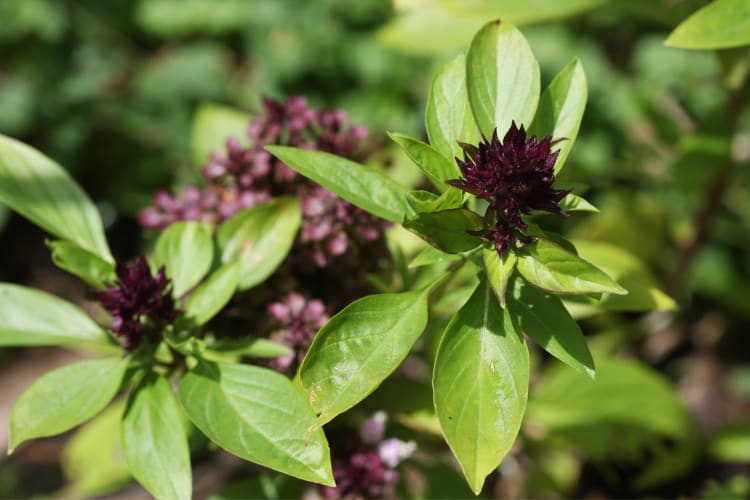
What Does Thai Basil Taste Like?
As stated, Thai basil has a flavor that’s a vibrant combination of savory and spicy. The slight anise or licorice flavor adds depth to the herb. Compared to other basil varieties, like the more common sweet basil, Thai basil has a bolder flavor.
Holy basil, another basil native to Southeast Asia, is commonly confused with Thai basil. However, these are two different species. Holy basil is also called Thai holy basil, so it’s not uncommon to confuse the two. However, holy basil is more peppery in flavor and has a different leaf shape.

Thai Basil vs. Basil
You may be looking at a recipe ingredient list and asking the question: “Is Thai basil the same as basil?” Well, they’re both varieties of basil, but they’re not exactly the same.
The basil variety that most people know as basil is sweet basil, also called Genovese basil. These are the oval-shaped leaves you’ll often see on top of pizza, in pesto or as part of a Caprese salad. Sweet basil, as the name suggests, tends to be sweeter than its cousin. Thai basil, however, is more distinctive with licorice and spice flavors and is used in Southeast Asian cuisine.
These two varieties also differ in appearance. A Thai basil leaf is narrow with serrated edges. It often features some purple coloring on the leaves and purple stems. Sweet basil leaves are thinner, more delicate and oval in shape. Because Thai basil is a sturdy variety, it can be cooked at higher temperatures without losing its taste or structure. Sweet basil must be cooked at lower temperatures to retain its flavor and keep it from wilting.
So, if you have a recipe that calls for Thai basil, but you only have sweet basil, can you substitute it? In a pinch, you could substitute basil of the sweet variety in place of Thai basil. However, you will lose some flavor, so it’s best to substitute it in recipes where Thai basil isn’t a main ingredient. For recipes where Thai basil is one of the stars, such as rice paper summer rolls, there is no good substitute for Thai basil that will match the flavor. It’s best to find the correct herb for those recipes.
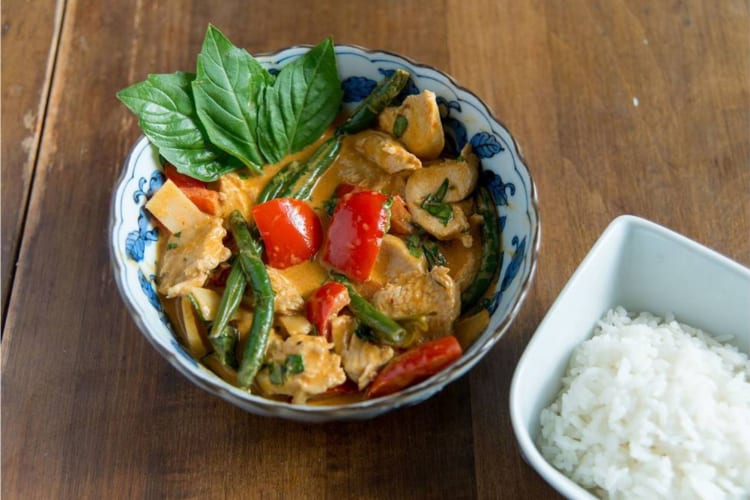
How To Use Thai Basil
Thai basil is a common ingredient in Southeast Asian cuisine. Therefore, if you want to use this herb in your cooking, making dishes from this region is a good place to start. Consider Thai basil chicken, basil fried rice, eggplant curry or traditional pho to experience the full flavor of this unique herb.
Some recipes will call for you to use the whole leaf. Other times, you may have to chop the herb leaves. So, what type of knife do you use for basil? A chef knife is the best option because the fine blade cuts through the leaves without tearing them.
Thai basil can also be used as a garnish to finish a dish. Either left whole or chopped into small pieces, you can top salads, soups and chip dips with this herb. Don’t forget to thoroughly wash the herb before use.
For even more ideas on how to use Thai basil, attend a few cooking classes near you or opt for online cooking classes from the comfort of your home.
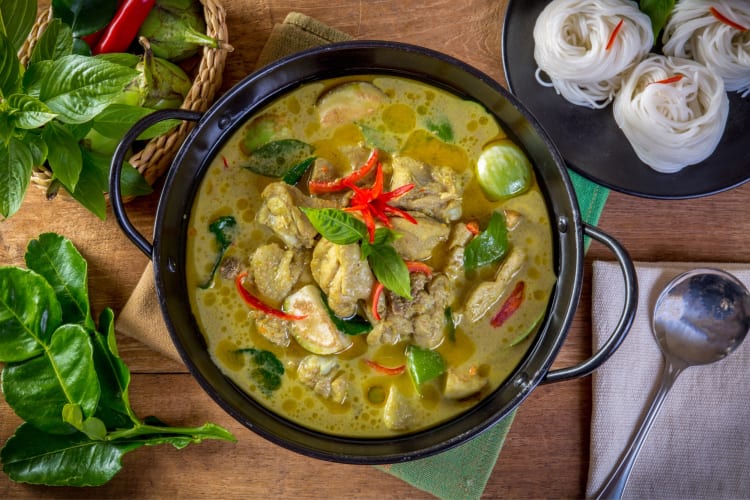
How To Store Thai Basil
Thai basil can be stored for up to a week in the refrigerator if you leave it in the plastic packaging it comes in or transfer it to an air-tight container. You can also wash the leaves and roll them up into paper towels before placing them in a resealable plastic bag. With this method, your Thai basil will last for about four days.
Chopped basil will wilt and go bad faster than whole basil, so storing it correctly is essential. You’ll want to place the leaves on a paper towel in an air-tight container. The container should prevent air from getting in, and the paper towel will help absorb excess moisture.
If you won’t be able to use all of your fresh Thai basil within a few days after it’s chopped, you can also dry the herb. Place a single layer of the chopped leaves on a baking sheet and put it in the oven at a low temperature for about two hours. Crumble the Thai basil pieces into a jar and use it for years to come.
Can You Freeze Thai Basil?
If you can’t use basil leaves immediately, you can freeze them so they last longer, and then use them later. However, it’s important to know that the flavor won’t be the same as when you use it fresh.
Blanching your Thai basil before freezing and storing it in an air-tight freezer bag can help maintain the green color longer (for about three months). To blanch Thai basil, dip the herb in boiling water for 30 seconds, then add the leaves to an ice bath immediately. Dry the leaves and place them in a freezer bag before freezing.
Another option is to blend the Thai basil leaves with olive oil in a food processor. Then, pour the mixture into ice trays and freeze them that way. This is a great option if you have extra chopped Thai basil that you want to store. You can use the olive oil and Thai basil mixture for meals like soup and fried rice.
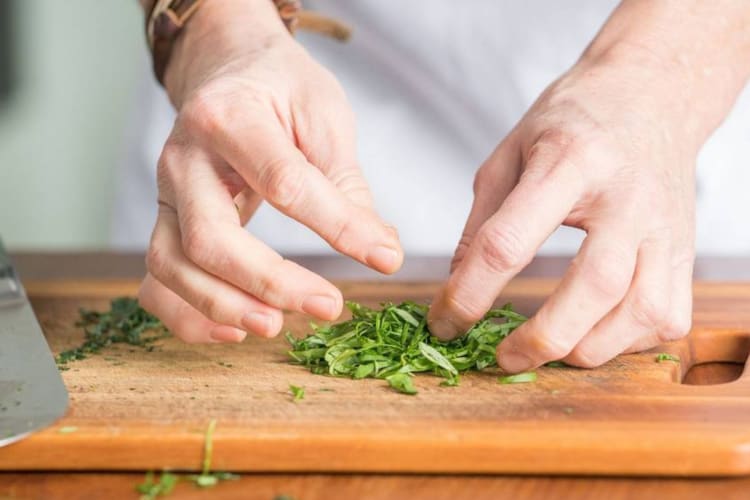
How To Grow Thai Basil
Thai basil is a great ingredient to have in your kitchen herb garden. Luckily, Thai basil is easy to grow and produces plenty of leaves you can use in your cooking. Six weeks before the last frost date in the spring, you can plant the seeds indoors. Plant the seeds about a quarter-inch deep in moist, well-draining soil. Plant one seed per pot so you don’t overcrowd the plants.
Allow the seeds to receive full to part sun. The seeds and plant should get at least six hours of direct sunlight each day. If you live in a hotter climate, opt for a spot that gets morning sun and afternoon shade to prevent the leaves from burning.
Move those seedlings outdoors when spring temperatures are consistently above 50 degrees at night and around 70 degrees during the day. You can also leave the plant in containers to grow indoors. Remove the purple flowers to encourage more leaves as the plant grows.
Add one part of compost to two parts of potting mix for container growing. This will add the nutrients needed for your plant to thrive. You also want to keep the soil moist, so water about every nine days if you keep the plant indoors. For outdoor plants, account for rain when watering your herbs.
Thai basil prefers warm, humid conditions. Therefore, bring outdoor plants inside when temperatures drop below 50 degrees Fahrenheit. Keeping plants in the kitchen, which often has lighter humidity compared to the rest of the house, can create an environment that Thai basil needs to thrive.
To harvest Thai basil, you want to pick the upper set of leaves on each branch. Doing this will encourage leaf growth. Harvest as often as every other day to maintain robust regrowth.
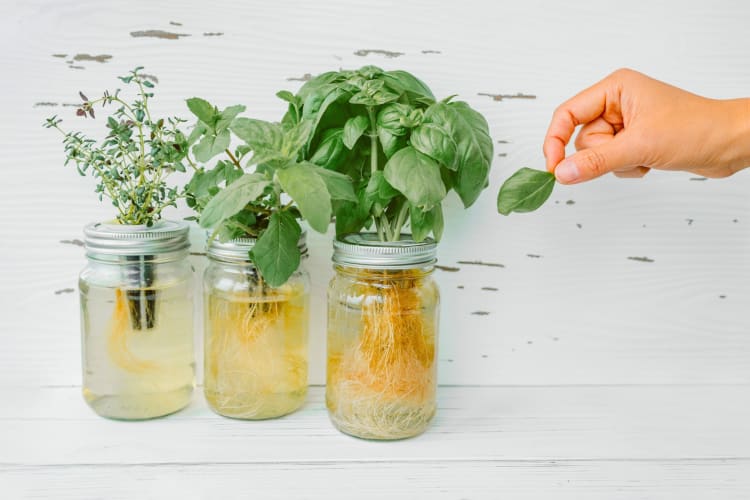
Where To Buy Thai Basil
If growing Thai basil is a little too much work, don’t worry because you can purchase it. You can often find Thai basil at well-stocked or luxury supermarkets. If you can’t find it at your grocery store, you can check out an Asian or international market.
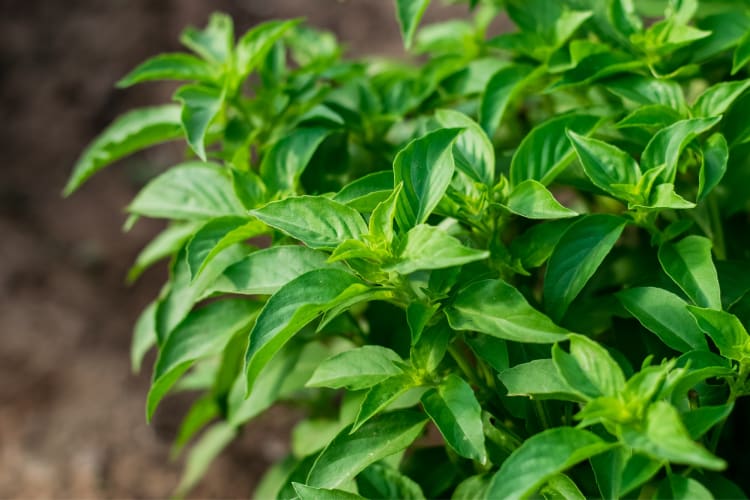
Thai basil is a unique ingredient that can add a boost of flavor to your dishes and is a quintessential part of Southeast Asian cuisine. While it’s related to common Italian sweet basil, Thai basil has a vibrant flavor that’s often irreplaceable. The flavor alone makes it worth seeking it out in its freshest form.
And if you love the flavor that much, you may even want to grow Thai basil, so you always have some fresh leaves on hand. Once you try Thai basil in a few authentic dishes, it might just become your favorite ingredient.
For even more ways to explore your favorite foods, check out other experiences happening on Cozymeal.



FOOD FOR THOUGHT?
Join the conversation.